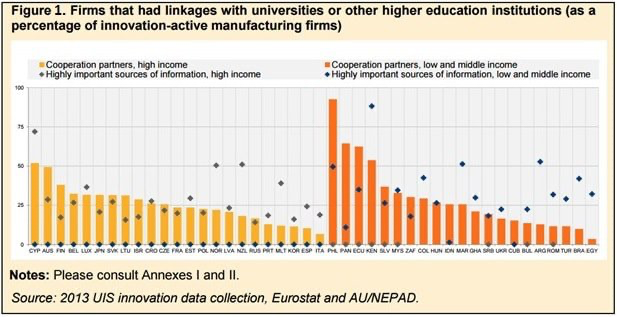COLLABORATION BETWEEN BUSINESS AND EDUCATION IS A WIN-WIN SITUATION
The involvement of business in education isn’t anything new. It has been tracked back to the early 1900s when the business model was adopted for restructuration of schools (1). This involvement and influence have continued to grow along with the increasing demand for highly educated specialists.
Adding extra value to the education
There are many actions that businesses can take to contribute to education, for example, training programs for the students that teach them skills relevant to the industry or provide a supply of educational materials, therefore fulfilling unmet educational needs. Another approach how to naturally transfer skills from senior employees to students used by IT companies is organizing events like Code Clubs, which is a simple but a powerful method (2). Most tech companies understand the importance of being involved in the educational sphere. They understand how involvement can enrich the next generation, add extra value to their education and prepare them for the professional field. Trough close involvement with universities and other higher education bodies, businesses can offer pupils expanded knowledge, ‘real world’ practical knowledge of working in the industry, as well as work as part of a team, getting the feel of working in the trade.
Lithuanian IT companies are setting a good example
Lithuania has one of the highest percentages of innovative businesses that have links with universities or other higher education institutions in comparison to other high-income countries – almost 32% of all the innovation-active manufacturing firms (Figure 1). Business sector involvement in the education field has been supported by valuable investments in it. Nearly a third of all business enterprise investment funds (23-33%) have been invested annually into higher education during recent years (2008 – 2014) (Figure 3). Since the Lithuanian government has tended to invest a decreasing proportion of the national budget into education (Figure 2), business involvement is becoming extremely important in delivering quality education. All of these factors indicate the increasing importance of businesses involvement with education. Many innovative and growing IT companies in Lithuania are creating educational programs for students, thus creating an opportunity for students to fill gaps in their knowledge, attain practical skills, and learn more about the IT field and working in it. One of these programming educational projects will start this summer-C# Academy created by Xplicity an innovative software development company based in Kaunas, Lithuania.
It’s not a one-way street
Of course it’s not a one-way street where businesses selflessly help the students there are many benefits to the companies as well. A recent analysis suggests that the expenses for wages and trainings are offset by the fundamental increase in productivity; it is a valuable return on investment for the companies (3). By getting involved in educating students, businesses are creating a generation of potential employees. They will have more skills that are related with the company, more practical industry experience and they will be able to adapt to the company and to the work itself much faster. Many will remain loyal to the company that trained them. It’s a win-win situation.
“The voice of business is needed to ensure we are producing students with the skills and knowledge needed for the workforce of today and of tomorrow” (4) expresses H. Singmaster the editor of Education Week. Businesses and educational bodies need to be more open to collaborating with one another, be pro-active in creating partnerships and emphasizing the reasons why these partnerships would be beneficial to both. These partnerships help to create highly educated, competitive, productive, and eager-to-learn future employees.

Figure 2. Expenditure on education as % of total government expenditure
| 2006 | 2007 | 2008 | 2009 | 2010 | 2011 |
| 14.3 | 13.3 | 13.1 | 12.8 | 12.9 | 12.3 |
Source: The World Bank Group. “Expenditure on education as % of total government expenditure (%)”
Figure 3. Research & Development Expenditure. Business Enterprise Investment in Higher Education Sector, Lithuania (2008-2014)
| Business enterprise funds | Total by sector | 2008 | 75.533 | |
| 2009 | 68.843 | |||
| 2010 | 71.131 | |||
| 2011 | 79.819 | |||
| 2012 | 78.979 | |||
| 2013 | 91.317 | |||
| 2014 | 117.168 | |||
| Higher education sector | % of total invested funds | |||
| 2008 | 28% | 21.316 | ||
| 2009 | 31% | 21.345 | ||
| 2010 | 25% | 17.899 | ||
| 2011 | 23% | 18.188 | ||
| 2012 | 29% | 22.909 | ||
| 2013 | 33% | 30.323 | ||
| 2014 | 23% | 27.296 |
Source: Statistics Lithuania

